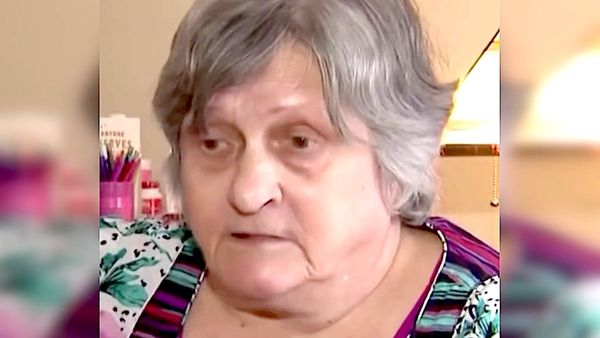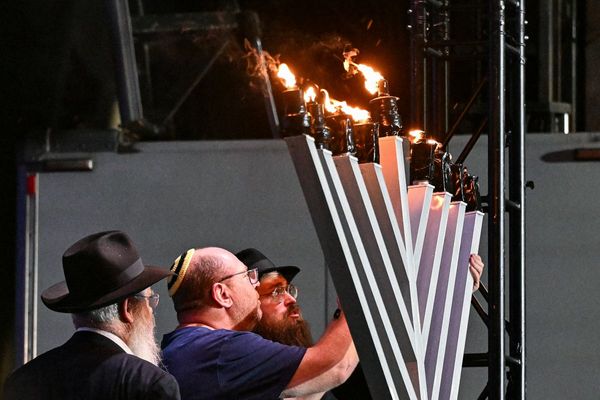
For centuries Izyum was regarded as the gateway to the Donbas region of eastern Ukraine and, from there, to the Black Sea. The Russians called the area around it Izyum passage.
Its strategic position has meant Izyum has become a fierce battleground in Russia’s invasion of Ukraine, as Moscow uses it as a launching point for its assault against Ukrainian forces in Donbas. It fell fully to Russian forces on 1 April, trapping thousands of civilians in a city where as many as 80% of its residential buildings have been destroyed.
“Before the war, Izyum had a population of 46,000 people,” said the city’s mayor, Valerii Marchenko, who managed to leave with thousands of fellow citizens before its capture. “There was a plant that produced military equipment, some small and middle businesses. Relationships with the neighbouring cities in Donbas were friendly. We always helped each other. But that was before.”
It is difficult for Ukrainian authorities to know the situation in Izyum, which is located 70 miles south-east of Kharkiv. Before the Russian occupation, local authorities managed to evacuate part of the population. But according to officials, approximately 10,000 to 15,000 citizens remain trapped, their fate uncertain.
“We cannot know for sure, because about 1,000 civilians were killed in airstrikes, artillery shelling and bombings,” said Marchenko. “The last centralised evacuation was on 10 March. We organised a green corridor with 60 buses. Humanitarian aid flowed in and people fled on those buses.
“Then we tried three times to organise green corridors, but when the buses got closer to town they were shot by the Russians and had to turn around. Some volunteers used their own cars and risked their lives to evacuate people, but the organised evacuation was impossible. And now that the city is occupied, our hands are tied.”
Witnesses told the Guardian how inhabitants had survived in their basements for weeks, without electricity, heating or running water. Oleksandr Motuzianyk, a spokesperson for Ukraine’s ministry of defence, said Izium was the area with highest concentration of Russian troops.
The capture of Izyum took a number of weeks. “Our town is separated into a northern and southern part by the Siverskyi Donets River,” said Marchenko. “The Russians first tried to enter the northern part. Our military blew up the bridges so they couldn’t enter the southern part from where they could move on to Sloviansk and Kramatorsk.
“For almost three weeks they couldn’t take over the southern part. There were numerous attempts from the Russian invaders to build temporary bridges over the river, but our defenders destroyed them. After countless attempts, they managed to cross the river, besiege the city and, after a week, gain control of the southern part.”
A 60-year-old man from Izyum said he managed to escape Russian troops before the city fell by swimming across the Severskyi Donets during freezing weather.
“I was in the northern part of the city when armed men who introduced themselves as soldiers of the so-called Donetsk People’s Republic came to me,” said the man. “They threatened me with weapons and took away two of my vehicles: a minibus and an SUV, as well as all the alcohol that was at home. At the time when they were robbing the house, they let me out of sight [and] I took advantage of the moment and escaped.”
He continued: “I swam to the southern part of Izyum across the river. I then contacted the city authorities by phone and they organised an ‘evacuation walk’, so they told us the path we had to walk. Eight people agreed to this risky operation, including four women, one teenager and a girl with cancer who urgently needed chemotherapy. We walked about 15km [9 miles] under fire [and] at the appointed place we were met by the Izyum mayor, Valerii Marchenko, and other employees. Then we all drove to Sloviansk and have been safe ever since.”
Izyum has now become a hub for Russian forces. According to officials, its capture has allowed Russia to move artillery 30 miles towards areas of Donbas under Ukrainian control.
“Our troops are holding them there,” said Marchenko. “But there is a lot of machinery in the town. They are moving their troops from the Kyiv and Chernihiv regions into Izyum. Before, all their machinery was marked with the letter Z, but now it’s also V and O. They are concentrating their troops, machinery and equipment to advance their attack on Donbas.”
As Russian forces advance, the mayors of Balakliya and Kupyansk, cities 30 miles and 43 miles from Izyum respectively, made a deal with Russian authorities. Both are now facing life imprisonment for treason.
“I just don’t understand them,” said Marchenko. “I was also receiving offers from the invaders with a demand to let them through and surrender. I told them I’m a mayor of a Ukrainian town. And it will remain this way. And I will never become a traitor. Why did they do this? You should ask them.”

Some witnesses have alleged that the Russians have prepared a list of individuals to “hunt”: those who may own weapons, businesspeople, activists and military. The fear is that Izyum will become another Bucha, where hundreds of civilians were killed and buried in mass graves or left in the streets.
“Bucha and Izyum are very similar,” said Marchenko. “In both, more than 80% of residential buildings are destroyed. People in both cities were hiding in basements for more than a month under constant shelling. There was no food. Some reports claim the Russians are compiling a list of people who need humanitarian aid. But instead they are preparing a list of activists, Donbas war veterans, police officers and local business owners. If they find them, they’ll be driven to an unknown location, and we will know nothing about their fate.”
Based on the Russian advance in recent weeks, the conquest of Donbas seems imminent, but Marchenko believes nothing is lost while Ukrainian soldiers are standing in front of them.







